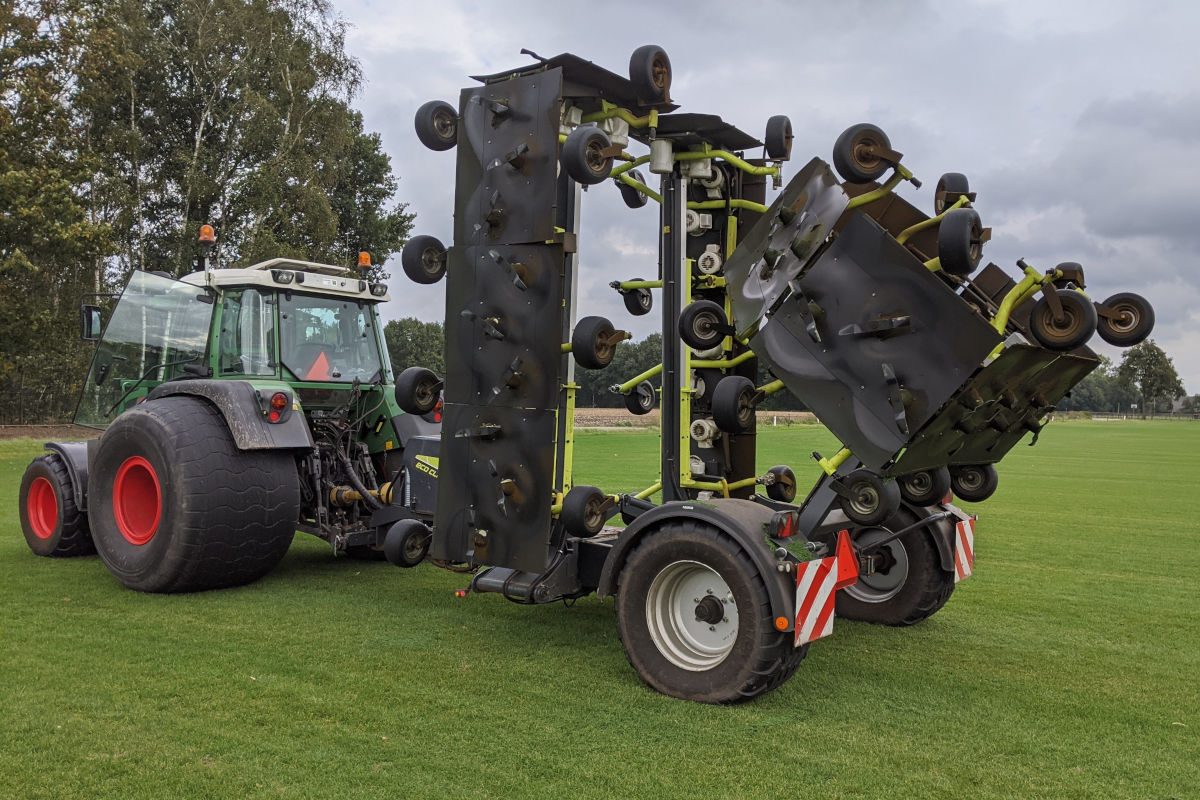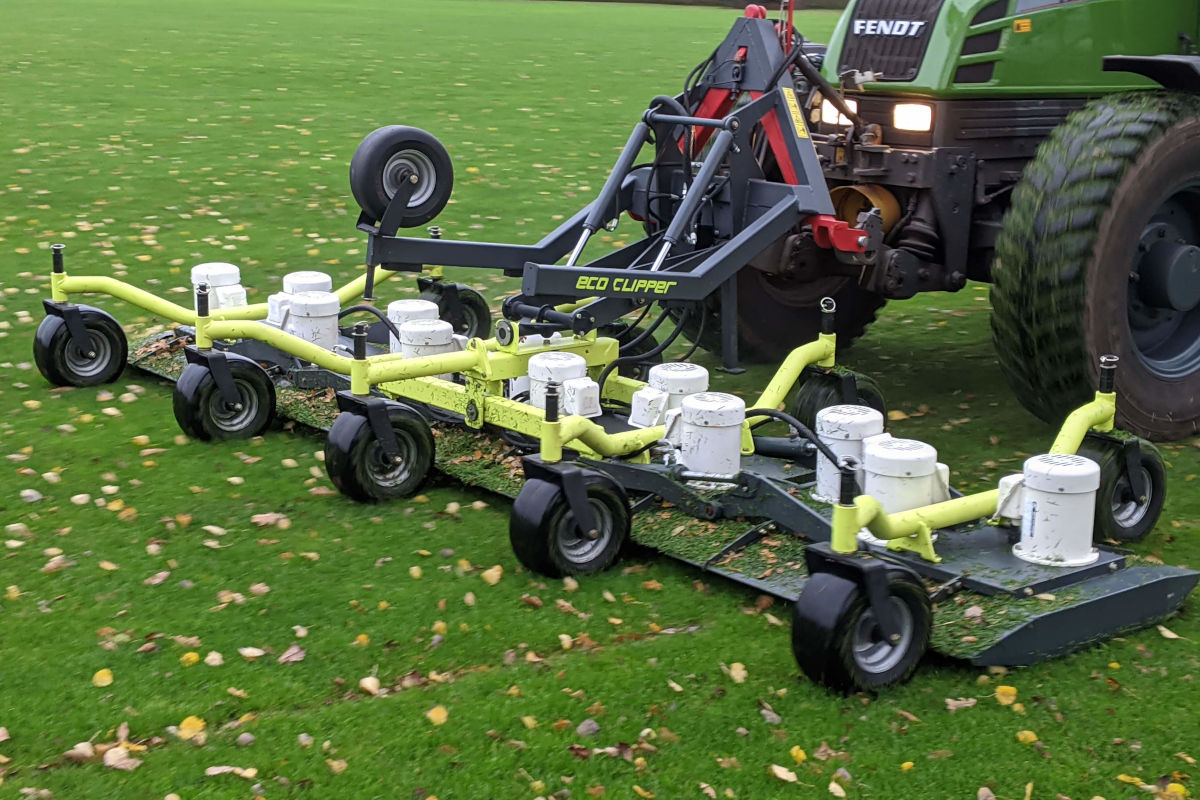The Eco Clipper ® Mowing System
Eco Clipper offers a mowing system with many advantages over traditional cylinder and rotary mowers. It consists out of independently suspended 106 cm wide deck sections. These sections are cleverly linked together in larger, but flexible contour following mowing decks. Each deck section has three fast spinning blades combined with a smooth bottom and large tires. This delivers a clean cut, even clippings dispersion and excellent following of the ground contours with minimal soil compaction. Also under wet mowing conditions the clippings are equaly dispersed.
Configure the mower you need
The decks can be attached to different frames, carried or towed. A front mower can consist out of a single deck consisting out of 2 till 6 sections. A towed mower can be of 10 till 14 sections wide, built out of 3 separate decks. A carried rear mower, combined with a front mower also can be 10 till 14 sections wide.









